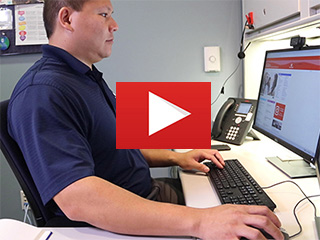Texas Children’s Health & Well-Being team has partnered with colleagues from Environmental Health & Safety, Physical Medicine and Rehabilitation and Occupational & Physical Therapy to launch a new video series aimed at preventing an all-too-common occurrence among our employees: the twinges and aches of lower back pain.
The latest offering in our ongoing effort to introduce programs and resources that help keep our workforce healthy and strong, the “We’ve Got Your Back” video series provides expert insight and information to empower you to take care of your back while on the job – no matter your work location, shift or role. Each video in the four-part series features quick, practical tips and advice for avoiding back pain by:
- Using ergonomics to set up your desk and arrange your work area for optimal comfort and safety.
- Adopting the proper body mechanics and techniques to lift and carry objects without strain or injury.
- Completing stretching and strengthening exercises to help maintain flexibility and build up your core.
- Loosening and relieving tension in your spine with simple and effective stretches you can do right at your desk.
“We know that Texas Children’s has grown exponentially in the last few years and we want to make sure that we provide all of our employees with robust resources to improve their health and well-being,” said Health Coach Jackie Pacheco, who is also a certified personal trainer, ergonomics and safety specialist and athletic trainer.
We’ve Got Your Back Episode 1: Ergonomics
Ready to start learning how to put back pain on the backburner? Click here to watch Episode 1: Ergonomics with Industrial Hygienist Gary Chang, who shows you how making small changes to your work environment – like adjusting the height of your chair or placing your phone closer within your reach – can make a big impact.
“The goal of the Environmental Health & Safety Department is to identify and correct existing ergonomic injury risks and to proactively identify those jobs that could put employees at risk of a musculoskeletal injury,” Chang said, noting that taking preventative steps can also help reduce the high cost of work-related injuries and mitigate the resulting impacts on our colleagues, our patients and their families.
“Ergonomics interventions allow employees to work safely and reduce the risks of musculoskeletal disorders.”


